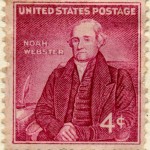My wife bought me a rice cooker for Christmas. Just when I thought I couldn’t be more elated I saw this burst of genius written on the box:
Includes fuzzy logic.
Hmm. As a former computer programmer I was intrigued. Infused into its digital code, fuzzy logic helps a device adapt to a variety of conditions, seemingly freeing it from the tyranny of stark yes-no decisions.
Why this makes for a better bowl of rice I have no idea. But it did remind me that so-called high technology is no longer just a play tool for enthusiasts. It’s everywhere—integrated into even the simplest products.
Rise above “speeds and feeds”
I'm hardly a Luddite. Technology definitely makes our lives easier. The trouble is, many companies are intoxicated by the intricacies of their own handiwork. Thus, their marketing copy seldom goes beyond dry explanations of what this or that button does. Or else it launches into complex excursions on functionality only an über-nerd would care about.
My rice cooker rocks. But you’d never know it from reading the marketing collateral.
Inspiration sells
Marketing copy should always inspire buyers in some way. Unless you’re selling to a strictly technical audience, your message should reflect the fact that most products are used by everyday folks who, well, just have a yen for a hot, fluffy bowl of rice.
Here are some guidelines for better tech product sales copy:
- Save the technical tone for the product manual, if you can’t avoid it altogether. Try a more conversational approach.
- Refer to the reader in the second person (“you”; “your rice cooker”).
- Stop calling us users, for crying out loud. We’re people, okay?
- Yes, technical information sells. But it is better relegated to a table or sidebar, where it won’t clutter. body copy and keep readers from absorbing your main selling points.
- Make sure you always convert product features and advantages into consumer benefits
(My colleague, Elaine Claussen, does a great job of explaining this critically important practice in her blog Presto Change-O! How to Turn a List of Features into Brilliant Benefits.)
Oh, and if you would, please pass the butter.




